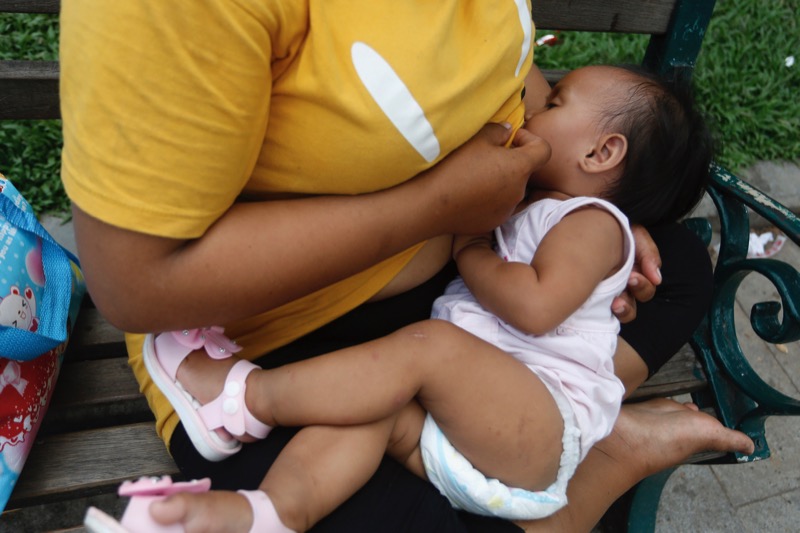Cambodia is one of 23 countries worldwide where over 60 percent of infants are exclusively breastfed, according to a recent study released by the World Health Organization and Unicef.
However, a lack of supportive policies for mothers means the country is somewhat of an exception, compared to others in the study, said Laurence Grummer-Strawn, who led the analysis. Although Cambodia ranked in the top 23 for exclusive breastfeeding rates, it met only one of seven key priorities—national monitoring of breastfeeding rates and related policies—at a satisfactory level.

“Cambodia seems to do a lot better than the policies it has to support it,” said Dr. Grummer-Strawn. He compared Cambodia to the U.K., which he said has expansive supportive services but lower rates of breastfeeding.
In addition to documenting the proliferation of breastfeeding, “The Global Breastfeeding Scorecard,” which was released last Tuesday, evaluates countries on seven priorities set by the Global Breastfeeding Collective shown to increase rates of breastfeeding. These are: funding, regulation of breast-milk substitute marketing, paid maternity leave, baby-friendly hospitals, breastfeeding counseling, community support programs and national monitoring of breastfeeding rates and related policies.
Cambodia’s success with breastfeeding is a new development—but it’s in decline. From 2000 to 2010, the amount of Cambodian babies under 6 months breastfed exclusively rose from 11 percent to nearly 75 percent, said Dr. David Raminashvili, technical lead for nutrition and health at World Vision Cambodia. He attributes this massive increase in breastfeeding to an aggressive media campaign supported by the government, the NGO sector and U.N. organizations during the 2000s.
Progress has since dropped off in the last five years, with exclusive breastfeeding under six months down to 63 percent. Both an increase of advertising for breast milk substitutes as well as women in the workforce have contributed to this decline, Dr. Raminashvili said.
Long Heang, a 37-year-old mother of three, has been feeding her month-and-a-half-old baby with a mixture of formula and breastmilk. She exclusively breastfed her first two children, but had to start using formula with her newest baby because of her schedule as a garment worker. “I am concerned about switching from breastmilk to formula, but I am too busy so we have to increase the formula feeding,” Ms. Heang said. Most garment workers are forced to do the same, she added.
Despite a sub-decree passed in 2005 forbidding advertisements for breast milk substitutes, a 2014 World Vision study found the policy was not being enforced.
However, there is some movement to change this.
In March, a pilot program charging the Council for Agricultural and Rural Development with monitoring the sub-decree on breast milk substitutes went live in Battambang, Siem Reap, Sihanoukville and Phnom Penh. World Vision and other NGOs are working in public Cambodian hospitals to increase community-based support programs, baby-friendly hospital practices and breastfeeding counseling at primary care facilities, Dr. Raminashvili said.
Breast milk is shown to be one of the most effective methods of preventing malnutrition. So reversing the decline of exclusive breastfeeding and increasing continuation at 2 years of age is essential to Cambodia’s achievement of development goals, Dr. Raminashvili said.
“It was possible to raise the exclusive breastfeeding rate during the first decade of the millennium under the media campaign,” he said. “We have knowledge of how to improve it, so we should get it back.”




